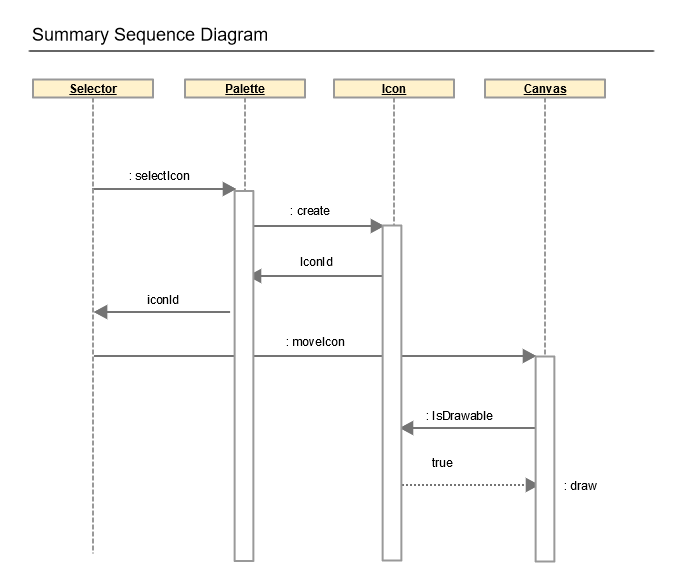Use Case Overview & Description
PM data collection control provides 5G network operators with a dynamic and more efficient way to configure performance measurement collection on a selected subset of PNFs/VNFs in the network and complements the existing PM data collection and processing capabilities in ONAP/DCAE. An initial version has been delivered in Rel 6 (REQ-129) then enhanced in Rel 7 (REQ-381). Planned enhancements for Rel 8 intend to improve the (PMSH) subscription management about subscription update.
Use Case Key Information
| TOPIC | DESCRIPTION | WIKI PAGE |
| Requirements Proposal | Honolulu release - functional requirements proposed list#PMDataCollectionControl:Subscriptionupdate | |
| Architecture S/C info | Information on the Architecture sub-committee presentation | |
| Prior Project "Base" Wiki | Bulk PM/ PM Data Control Extension | |
| Requirements Jira (REQ-###) Ticket | REQ-422 - Getting issue details... STATUS | |
| Key Use Case Leads & Contacts | USE CASE LEAD: Mark Scott , Zu Qiang (Ericsson) , Michela Bevilacqua USE KEY CONTACTS: | |
| Meetings Register & Recordings | Link to Use Case Team meetings. |
BUSINESS DRIVER
Executive Summary: In Rel 6 (REQ-84) and Rel 7 (REQ-324), PNF sw upgrade requirement in ONAP has progressed covering both with/without schema updates.
A schema update in relation to a xNF software upgrades is a routine for network upgrade to support new xNF features, improve efficiency or increase xNF capacity on the field, and to eliminate bugs. This use case provides to ONAP an advantage in orchestrating and managing the Life Cycle of a Network Services in-line with business and service objectives. In Rel 8, the feature will be enhanced with PNF sw version management during sw upgrade procedure.
Business Impact: Deployment and orchestration of new services over CNFs, VNFs and PNFs in a model and software driven way simplifies the network management. Enables operators and service providers to manage the Life Cycle of a Network Service. Assuring continuity of operation of services is crucial for production and carrier grade environments. The actualization or upgrades of software and in consequence required changes in the service model is a natural part of service instance life cycle. Without the support of ONAP service update with schema change, service life cycle management by ONAP can be very difficult which can impact the quality and continuity of services.
Business Markets: All operators and service providers that are using ONAP for service and network function Life Cycle Management
Funding/Financial Impacts: Reduction in operations expense from using industry standard Interfaces.
Organization Mgmt, Sales Strategies: There is no additional organizational management or sales strategies for this requirement outside of a service providers "normal" ONAP deployment and its attendant organizational resources from a service provider.
Development Status
| PROJECT | PTL | User Story / Epic | Requirement |
| A&AI | |||
| AAF | |||
| APPC | |||
| CLAMP | |||
| CC-SDK | |||
| DCAE | |||
| DMaaP | |||
| External API | |||
| HOLMES | |||
| MODELING | |||
Multi-VIM / Cloud | |||
| OOF | |||
| OOM | |||
| POLICY | |||
| PORTAL | |||
| SDN-C | |||
| SDC | |||
| SO | |||
| VID | |||
| VF-C | |||
| VNFRQTS | |||
| VNF-SDK | |||
| CDS |
List of PTLs:Approved Projects
*Each Requirement should be tracked by its own User Story in JIRA
USE CASE DIAGRAM
Use cases define how different users interact with a system under design. Each use case represents an action that may be performed by a user (defined in UML as an Actor with a user persona).
Use Case Functional Definitions
Use Case Title | Title of the Use Case |
Actors (and System Components) | The list of Actors and System Components that participate in the Use Case |
Description | Short overview of the Use Case |
Points of Contact | Authors and maintainers of the Use Case. Use Case Lead, Key Use Case members and code contributors. |
Preconditions | A list of conditions that are assumed to be true before the Use Case is invoked Includes description of Information Consumed |
Triggers / Begins when | Describes the trigger for beginning the Use Case |
Steps / Flows (success) | Describes the sequence of steps and interactions that occur during the Use Case (may include: description, data exchanges, functionality, state changes) Interaction diagrams may be included or referenced |
Post-conditions | The expected results of the execution of the Use Case Includes description of Information Produced |
Alternate / Exception Paths | Description of any exceptions or special process that could occur during Use Case |
Related Use Cases | List of the Use Cases referenced by this Use Case |
Assumptions | Describes any assumptions that are made for this use case |
Tools / References / Artifacts | List of any tools or reference material associated with this Use Case as well as any JIRA trace-ability. List of any associated diagrams or modelling artifacts associated with the Use Case |
Requirement Status
Key
Summary
Created
Assignee
Reporter
P
arch review
m1 scorecard
m1 approval
m2/3 scorecard
m2/3 approval
m4 scorecard
m4 approval
rc0 scorecard
rc0 approval
Status
tsc priority
Development Status
TESTING
Current Status
Testing Blockers
- High visibility bugs
- Other issues for testing that should be seen at a summary level
- Where possible, always include JIRA links
End to End flow to be Tested
**This should be a summary level Sequence diagram done in Gliffy**

Test Cases and Status
| 1 | There should be a test case for each item in the sequence diagram | NOT YET TESTED |
| 2 | create additional requirements as needed for each discreet step | COMPLETE |
| 3 | Test cases should cover entire Use Case | PARTIALLY COMPLETE |